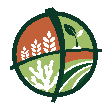Banca de QUALIFICAÇÃO: ADONIAS LIMA DA RESSURREIÇÃO JUNIOR
Uma banca de QUALIFICAÇÃO de MESTRADO foi cadastrada pelo programa.STUDENT : ADONIAS LIMA DA RESSURREIÇÃO JUNIOR
DATE: 27/04/2023
TIME: 08:00
LOCAL: Sala de reuniões
TITLE:
Morphological characterization of cassava cultivars in the municipality of Alcobaça-BA.
KEY WORDS:
Extreme south of Bahia, Cassava, Morphological Descriptors, Production
PAGES: 30
BIG AREA: Ciências Agrárias
AREA: Agronomia
SUMMARY:
Cassava (Manihot esculenta Crantz) originates from South America and worldwide is tolerant to different soil and climate conditions. It is cultivated in several regions of the world, in addition to being resistant to attack by pests and diseases, it has an excellent capacity for adaptation and production in soils with low fertility and little rainfall. It stands out for its fundamental importance in human and animal food, moreover it is inserted as raw material in industries for the manufacture of numerous products. It is a culture responsible for a large part of the economic production in Brazil because it has many functions and utilities and was elected by the UN as the food of the 21st century. This research aims to morphologically characterize a local variety of cassava (Caravelas) and fourteen materials from the Germplasm Bank of Embrapa Mandioca e Fruticultura, implanted in Maniveiro Guardião in the extreme south of Bahia, namely: Amansa burro, BRS Platina E, Cigana B, Corrente, Formosa, Lagoão, Mulatinha, Olho Roxo, Pretinha, Sergipe, Tapioqueira, Vassoura Preta, Caipira and BRS Prata. The agronomic evaluation was collected following the methodologies of the morphological descriptors for the cassava crop, with the collection of information from the aerial part and root of thirteen varieties of cassava, the collected data were submitted to statistical analysis for the estimation of equivalent variables. After carrying out the morphological analyzes of the fifteen varieties, the reliability analysis of the phenotype of the varieties was
carried out in relation to the genotype under the conditions of the culture in the region. How much of the aerial part of the plant. In some varieties, greater variability was contemplated for the same descriptor. While, in others, the analyzes allowed verifying the homogeneity of the presented characteristics, such as, for example, dichotomous branching habit, phyllotaxis length/short base and white root pulp color. It is concluded that the varieties Mulatinha, Formosa, Sergipe, Platina E, Lagoão, Vassoura preta and Caravelas, presented characteristics relevant to the production of cassava, such as external color of the light brown or dark brown root, white pulp color and straight stem growth and short phyllotaxy length. On the other hand, the varieties Amansa burro, Caipira, Lagoão, and Caravelas showed characteristics of interest for the use of the aerial part, such as short phyllotaxis length, dichotomous branching habit and dark green leaf color. Furthermore, it is important to carry out genotypic studies to confirm the occurrence of such variations and studies regarding productivity in relation to the production of starch and flour is recommended.
COMMITTEE MEMBERS:
Externa à Instituição - ANA ROSA ALVES DE OLIVEIRA
Externo à Instituição - BRUNO OLIVEIRA SOARES
Presidente - 1156996 - LIVIA SANTOS LIMA LEMOS
Interna - 1906490 - LUANNA CHACARA PIRES
Interna - 1149467 - TAINA SORAIA MULLER



